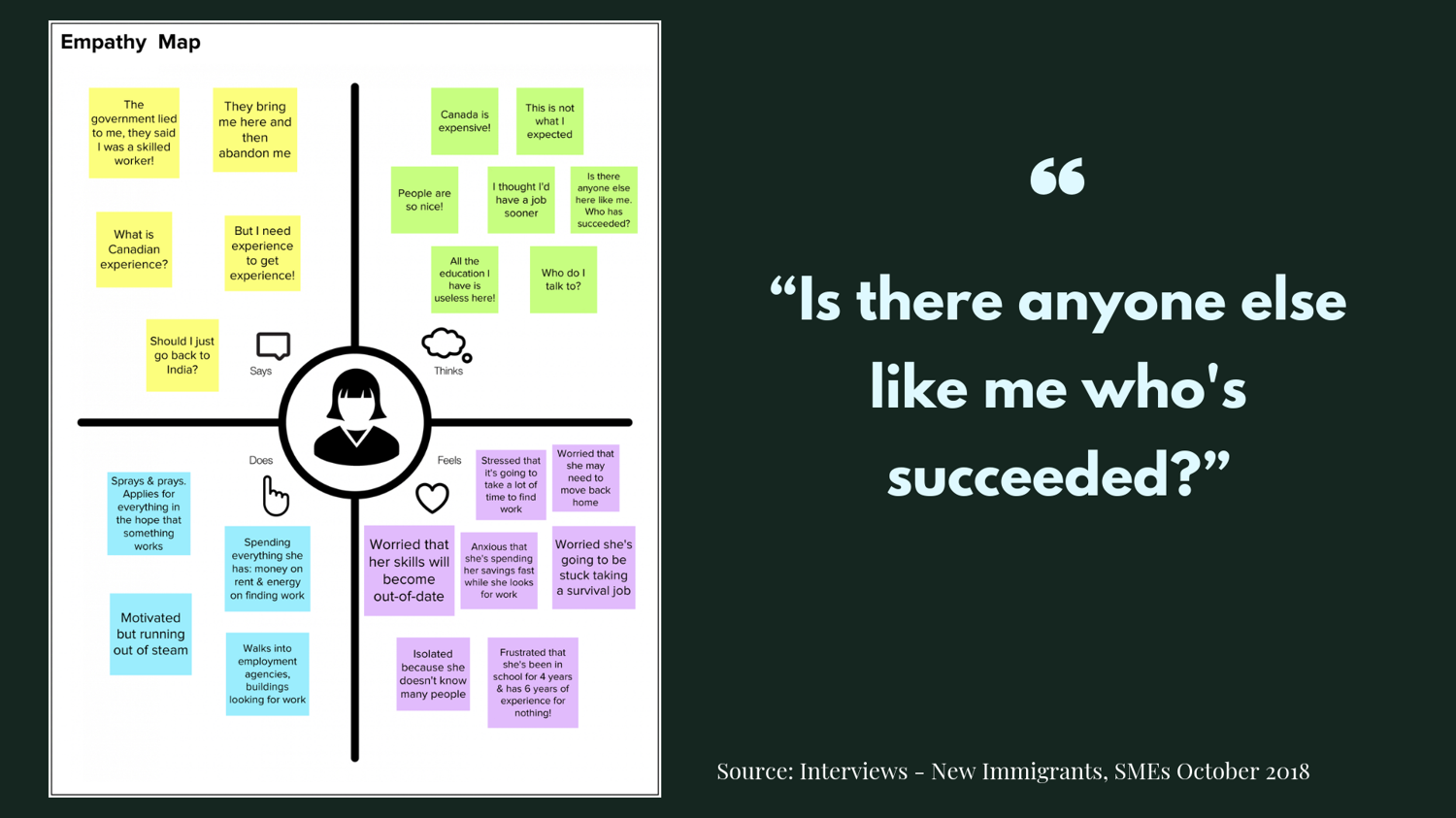Mentor Match
Mentor Match
A Service for New Canadians
In this project we used the IBM Design Thinking process to develop a new product aimed at helping build and strengthen the fabric of a community: new immigrants to Canada. After reviewing secondary sources, both government and academic, and conducting a series of interviews with recently landed immigrants, subject matter experts and services providers, we identified a key issue holding newcomers back: it takes Canadian experience to get Canadian experience. This catch-22, is demoralization and confusing; as one newcomer said “6 months ago no one would speak to me, but now that I have 6 months of experience at RBC, everyone is calling, but my experience-level is the same, I’m the same”. How do we get newcomers a leg-up, a foot in the door? There are currently mentorship programs that serve to bridge the gap, but they are limited in scope, only available in person, and focus exclusively on advice, when newcomers need tangible experience in Canada that they can put on their resume.
After conducting our formative research, which included doing affinity maps to arrive at our key issues that lead to our problem statement, we developed our main Persona (her name is Tanvi), an Empathy Map and diagram of her current experience in what IBM calls an “As-is scenario”. This helped us understand where we could help make improvements. Next, we generated a series of ideas, storyboarded these ideas, and prioritized these ideas to arrive at the Mentor Match concept. We devised the program as one that would focus on matching newcomers with people just like them, unlike current programs that primarily make matches primary based on skill. In addition, we proposed a program that would include general advice, but also the opportunity to job shadow and take on mini-internship or projects along-side their sponsoring mentor. For mentors, this is a great talent pipeline, as more often than not many mentors end-up hiring their mentees, or referring them to someone that it is. According to service providers I spoke with, it’s often unconscious bias that prevents many managers from hiring foreigners; there’s a misconception that either their schooling isn’t up to par, or the pace or role they had isn’t equivalent, when it’s simply not true.
In this project, my main role was UX Research. When we conducted our formative research, I developed the methodology, created the instruments, programmed the survey, conducted the interviews, and lastly coded and analyzed the data. At the end of the project, I also took the lead in conducting the Summative evaluations. I created the test protocol, wrote the discussion guide and other post-test instruments, and once again, analyzed the results, which were used to optimize our Lo-fi (using paper) and Mid-fi protoypes (using Figma). During this project, I also contributed to ideation, facilitation, sketching and prototyping, however, given my background in UX Research and our limited time and resources, it make sense for me to take on this role, and hone my practice.
Client: Mentor Match
My Role: UX Researcher, UX Design
Platform: Desktop
Sector: Non-for-Profit
Methodologies: Design Thinking, Empathy & Affinity Mapping, Storyboarding, Formative and Summative Research
Tools Used: Paper, Figma, Google Forms
Skills Developed: Interviewing, Facilitating, Sketching, Survey Development, Storytelling, Prototyping
Artifacts: Problem & Needs statements, Persona, Empathy Map, As-Is Scenario, Affinity Map, Big Ideas, Prioritization Matrix, Hills & Key Features, Lo-Fi Sketches & Storyboard, Mid-Fi Prototype & Storyboard, Summative Testing Results, Concept Video: Tanvi’s Story













